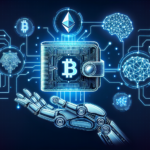Understanding Blockchain Technology
What is Blockchain?
Blockchain is a decentralized digital ledger that securely records transactions across a network of computers. Each block in the chain contains a number of transactions, and once it is filled, it is linked to the previous block, creating a chain of data. The decentralized nature of blockchain means that no single entity has control over the entire chain, which enhances security and transparency.
Key Features of Blockchain
Immutability
One of the defining features of blockchain is its immutability. Once information is recorded on the blockchain, it cannot be altered or deleted. This property is achieved through cryptographic hashing, which ensures that any change to a block would require altering every subsequent block, making it nearly impossible to tamper with the data without consensus from the network.
Decentralization
In a traditional database, data is often stored in a central location, making it vulnerable to hacking or corruption. Blockchain’s decentralized structure disperses data across a network of nodes, making it difficult for any single point of failure to compromise the system.
Transparency and Trust
Transactions on the blockchain are publicly accessible and can be audited by anyone. This transparency fosters trust among participants, as everyone can verify the transactions independently.
Diving into Traditional Databases
What is a Traditional Database?
A traditional database is a collection of structured information that is managed by a Database Management System (DBMS). Common types of traditional databases include relational databases, which use a structured query language (SQL) to manage and query data, and NoSQL databases, which are designed to handle unstructured data.
Key Features of Traditional Databases
Centralized Control
Traditional databases are typically under the control of a central authority, which manages access, modifications, and the overall integrity of the data. While this approach provides ease of management, it also creates a single point of failure.
High Performance for Transactions
Traditional databases excel in transaction processing, often providing high-speed operations for queries and data modifications. They are well-optimized for specific types of read and write operations, making them suitable for applications that require quick data retrieval and manipulation.
Data Schema Flexibility
While relational databases rely on structured schemas, allowing for complex relationships between the data, NoSQL databases can handle unstructured or semi-structured data. This flexibility enables them to adapt to changing data requirements without the need for extensive modifications.
Comparative Analysis of Blockchain and Traditional Databases
Data Structure
In blockchain, data is structured in blocks linked in chronological order, whereas traditional databases use tables where rows and columns organize the information. This difference impacts how data can be retrieved and manipulated.
Query Performance
Traditional databases generally outperform blockchains in terms of query performance, especially for large datasets and complex queries. The indexing and optimization capabilities of traditional databases are designed for quick data retrieval. In contrast, blockchain transactions must be validated and confirmed before being added to the chain, making them slower for query-heavy environments.
Security Mechanisms
Access Control
Traditional databases utilize access control measures to protect sensitive data. Users can be assigned different roles, allowing them to perform specific actions based on their permissions. Blockchain operates differently; while it allows for public access to data, sensitive data can still be encrypted and hashed to preserve privacy.
Vulnerability Management
A centralized traditional database can be a target for cyber attacks because compromising the central administrator can lead to a total breach. In contrast, blockchain’s decentralized existence means that gaining access to the network requires controlling a majority of the nodes, making it more resilient against attacks.
Scalability and Efficiency
Handling Scale
Traditional databases can be scaled horizontally or vertically by adding hardware resources or distributing load across multiple servers. Blockchain systems, while scalable, often encounter challenges due to the need for consensus mechanisms and block confirmation times, which can lead to slower performance as the network grows.
Energy Consumption
Blockchain technology, particularly those utilizing proof-of-work consensus algorithms, can be energy-intensive. This is primarily due to the computational power required to validate transactions and maintain security. Traditional databases, particularly cloud-based solutions, often consume less energy, making them more efficient for large-scale operations.
Use Cases for Each Technology
When to Use Blockchain
Blockchain is particularly well-suited for use cases requiring transparency, immutability, and decentralization. Examples include:
Cryptocurrency Transactions
Bitcoin and other cryptocurrencies leverage blockchain technology to enable peer-to-peer transactions without the need for a central authority, reducing the risk of fraud and enhancing trust.
Supply Chain Management
By recording every transaction on a blockchain, companies can verify the authenticity and movement of goods, enhancing transparency and accountability throughout the supply chain.
When to Use Traditional Databases
Traditional databases are ideal for applications requiring speed, efficiency, and complex transactions. Some use cases include:
Enterprise Resource Planning
Many organizations utilize traditional databases for their ERP systems, where quick access to data is critical for day-to-day operations and decision-making.
Customer Relationship Management
CRM solutions benefit from the structured nature of traditional databases, allowing for rapid retrieval of customer data, analytics, and reporting.
Future Trends and Considerations
Integration of Blockchain with Traditional Systems
As industries evolve, there is a growing trend towards integrating blockchain with traditional databases. This combined approach allows organizations to leverage the strengths of both technologies. For example, businesses can store sensitive information securely in a traditional database while recording transaction authenticity on a blockchain.
Emerging Technologies
The rise of new technologies such as artificial intelligence and Internet of Things (IoT) devices is also influencing how databases are designed and implemented. Future iterations of both blockchain and traditional databases may incorporate these technologies to improve efficiency, security, and usability.
Regulatory and Compliance Challenges
As blockchain gains traction, regulatory bodies are beginning to scrutinize its use, especially concerning data privacy and security. Organizations must remain aware of the evolving legal landscape to ensure adherence to regulations while leveraging the technology.
In summary, the choice between blockchain and traditional databases depends on the specific needs and goals of an organization. Each has its strengths and weaknesses, making understanding their differences crucial for effective implementation.








